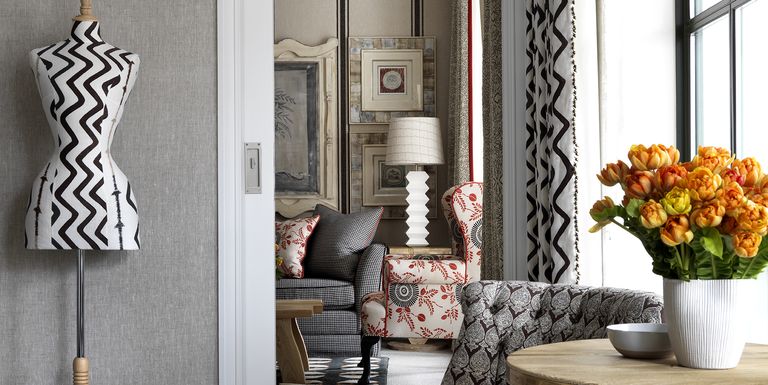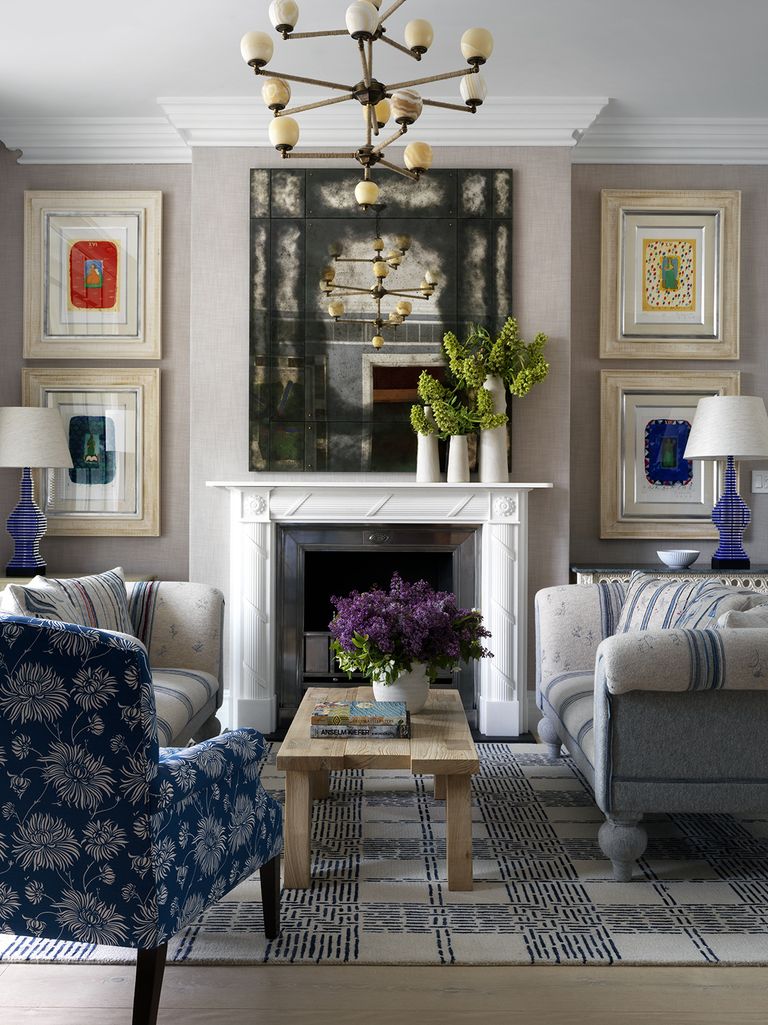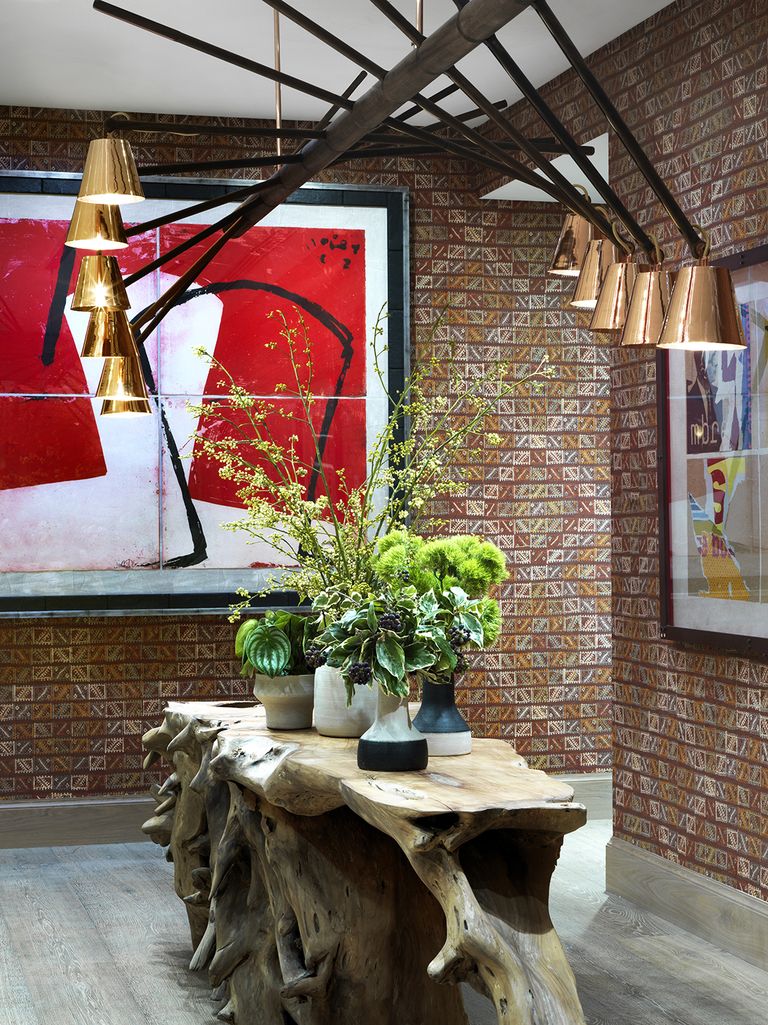The Firmdale Hotel Group is many things to design lovers: inspiring, playful, endlessly inventive. Kit Kemp’s design savvy follows her everywhere and her touch for interiors is like Midas’s for gold – she can’t seem to get it wrong.
Her second New York project (following the ever-popular Crosby Street Hotel, which opened in 2009), The Whitby Hotel in New York City’s Midtown, is no exception.
But what makes her eight London and now two New York properties so special? Many things, really – from the commissioned artworks, to her own fabric collections serving as wallpaper and upholstery, to uniquely sourced furniture pieces from around the world. Kemp’s ability to wow a design aficionado with every turn could make that same expert easily miss one of the essential design elements that make her rooms so special: the flowers.
The mastermind behind the lush arrangements is New York City florist Lewis Miller who, somewhat infamously last year, installed “flash” flower installations all across the city in places as prominent as Central Park and as non-descript as city trash cans. When he first saw the Crosby Street Hotel and subsequently met Kemp, he was “so incredibly happy.”
“There was nothing like it in New York City,” Miller said of Kit Kemp's go-to English countryaesthetic. “The word ‘country’ was like a four-letter word. Everything had to be ‘chic’ even though none of it was – it really all just became mundane. To see what Kit was doing made my heart sing.”
Miller kicked off the holiday season with a floral design class in the gorgeous Anrep room, where he shared some of the secrets to his and the Whitby’s floral charms. His next class is slated for Monday, February 12, and tickets are still available. In the meantime, arm yourselves with the tips below before you make your next trip to the local flower shop or through your outdoor garden.
1IT’S ALL ABOUT THE CONTAINER
“It’s simpler than people understand,” said Miller. “I think that when it comes to bringing flowers home – and this is how I live with flowers – is that they are like accessories.”
The most important thing to make an arrangement pop, he says, is to have a gorgeous vase, or what Miller refers to as a container. Miller picks up containers whenever and wherever he sees one that is striking. His philosophy is that these pieces should stand alone, with or without flowers.
“If there’s a gorgeous piece of pottery without flowers, it still lives as a great object in your home,” he said. “So then, when it’s time to pick flowers, you have the right pieces to complement that art work.”
2AVOID CLICHÉS
Glass vases with marbles at the bottom, fake fruit in bowls, orchids: these are the stuff of Miller’s nightmares. A beautiful flower arrangement should be full of life, not the imitation of it.
Orchids, he says, became synonymous with “luxury” for a time, and thus have become its antithesis. Miller argues that luxury is all about simplicity and comfort.
“There is nothing in Kit Kemp’s hotels that you can’t put your feet on, or that you feel threatened by,” he said.
3GET THE RIGHT TOOLS
A few essentials will help any novice create enviable arrangements. Miller advises recommends getting a very sharp pair of cutters or bonsai shears that are kept solely for flowers. In other words, keep these separate from any other scissors you might use for other purposes.
He also recommends chicken wire. “Get a couple of pieces, cut them to the size of a handkerchief and wad that up into a vessel to create a flower frog,” said Miller, describing the support system that sits at the bottom of many floral arrangements to keep blooms in place. “Especially if the bowl or container has a wider opening, this will help hold up the flowers so they don’t flop all over the place.”
And don’t bother with commercial flower food. Instead, keep a can of 7-Up or Sprite (not Diet) in the cupboard and when needed, mix it with equal parts water and voila – flower food. The citric acid and sugar keeps flowers alive and well, says Miller.
“For the home designer, anything beyond that and you suddenly become complicated,” he said. “It’s about encouraging people to use flowers in their everyday life without thinking, ‘Oh my god, it has to become this big situation!’”
4STAY WITHIN YOUR COMFORT ZONE
The eclectic English aesthetic of Kemp’s interiors create a literal garden for Miller’s work. But all the flowers fit – nothing appears out-of-reach.
“Stick to the color scheme,” said Miller. “Don’t go off the rails in a color scheme that has nothing to do with the way your interior looks. Don’t mix too many colors. Hot pink and yellow won’t work with a blue and white arrangement."
Even at Kemp’s hotels, where the interiors have innumerable design layers, from upholstered walls to contrasting curtains and sofas, the florals appear seamlessly integrated.
“They shouldn’t be noticed if they’re there,” said Miller of the flowers. “But if they’re not there, they’re definitely missed.”
5THINK OF FLOWER SHOPPING LIKE BUYING PRODUCE
For a beginner, shopping for flowers can be overwhelming. It’s hard enough to remember what fruits and vegetables are in season, how can we be expected to know which flowers are best when?
Miller says to think of it like produce not just from a seasonal perspective, but quite literally, find what looks and smells fresh. If something is tepid around the edge, don’t buy it. It needs to be stiff, sturdy and not fully open, he advises. The buds should be slightly popped and the stem should be firm, not mushy.
“It’s a matter of taste and season,” Miller said. “If you live in a house in the suburbs and you whack at some twigs outside, you could create a composition that’s wintery and beautiful and unexpected. In summer, cut some foliage and bring it inside. Pick something that makes you happy."





